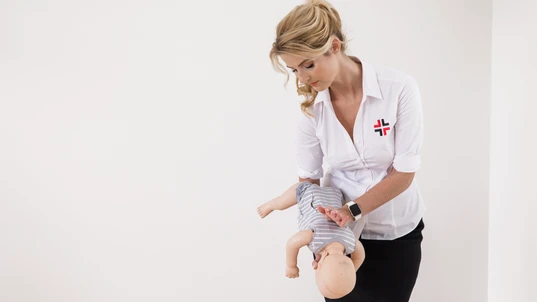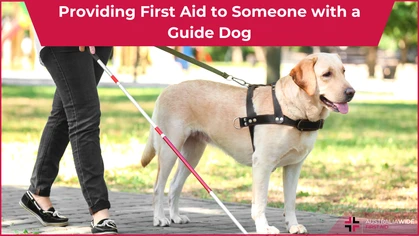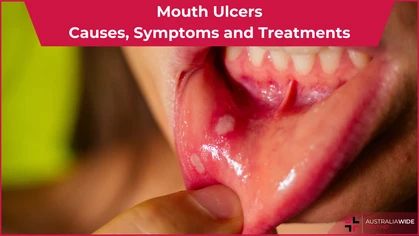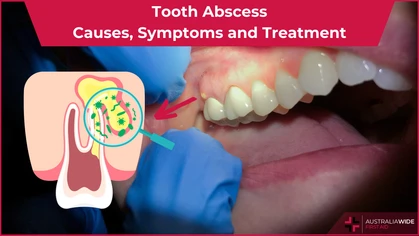The Heimlich Manoeuvre

General Health-Related

In American film and television, the Heimlich manoeuvre is typically touted as the best way to treat choking victims. However, its name recognition defies its relatively ineffective and sometimes life-threatening impact on choking casualties.
In America, the first of June is National Heimlich Manoeuvre Day, a day to celebrate Henry Heimlich's namesake method for treating choking casualties. Many people are familiar with the term "Heimlich Manoeuvre", as it is often shown in film and on television as the best way for relieving airway obstructions. However, despite its popularity, the Heimlich Manoeuvre is actually not as well-regarded in real life. In fact, in Australia, the Heimlich Manoeuvre is not accepted, and it is recommended that choking victims are instead treated with a combination of back blows and chest thrusts. As such, we are going to use this opportunity to discuss the history of the Heimlich manoeuvre and how it is used today.What is it?
The Heimlich manoeuvre, which falls under the umbrella of abdominal thrusts, is a first aid technique that was developed with the intention of dislodging foreign objects from obstructing the upper airway. To perform the Heimlich manoeuvre, the first aid responder must stand behind the casualty, grasp their hands together just above the casualty's bellybutton, and then exert pressure on the bottom of the casualty's diaphragm. It was believed that this manoeuvre would act much like a cough, in that it would compress the lungs and exert enough pressure on the foreign object to expel it from the trachea.
This technique goes against recommendations here in Australia.
Its Invention and First Use
Henry Heimlich, an American thoracic surgeon and medical researcher, is widely credited as the inventor of the Heimlich manoeuvre. He first published his views about the manoeuvre in an informal article in 1974. In 1975, after it was widely reported that a retired restaurateur had used the manoeuvre to rescue a choking victim, Henry formally described the manoeuvre in two medical journal papers. Henry promulgated the Heimlich manoeuvre as a safer and more effective alternative to back slaps, the latter of which he claimed had been proven to cause death by lodging foreign objects into the windpipe. In 1982, a Yale study partially funded by Heimlich's foundation persuaded the American Heart Association, a non-profit organisation in the United States that fosters cardiovascular research, education, and care, to stop recommending back blows for dealing with choking. As a result, from 1985 to 2005, the American Heart Association and the American Red Cross, a non-profit organisation that provides and educates on disaster relief, exclusively recommended the Heimlich manoeuvre as a treatment for choking. Head to the following website for more information about Henry Heimlich's colourful career.Its Use Today in the United States
From 2006, both the American Heart Association and the American Red Cross heavily downgraded the use of the Heimlich manoeuvre as a treatment for choking. This was because studies showed that applying intrathoracic pressure inwards, as with chest thrusts and back slaps, was just as effective as applying intrathoracic pressure inwards and upwards, as with the Heimlich manoeuvre. Likewise, researchers argued that chest thrusts and back slaps may be easier to perform and less likely to inflict injury to the ribcage or upper abdominal muscles, compared to the Heimlich manoeuvre. Nowadays, the American Heart Association and the American Red Cross recommend that conscious choking casualties be treated with the "five and five" technique - that is, by first applying five back slaps and then five abdominal thrusts, if the back slaps fail to remove the airway obstruction. Meanwhile, for unconscious choking casualties, the American Heart Association and the American Red Cross recommend the use of chest thrusts.Its Use Today in Australia
Funnily enough, abdominal thrusts (including the Heimlich manoeuvre) have never been recommended in Australia as a treatment for choking casualties. In fact, the Australian Resuscitation Council (ARC), which coordinates how resuscitation techniques and terminology are used throughout Australia, actually does not accept the use of abdominal thrusts, as it has been associated with life-threatening complications in over 50 observational studies, including perforation of the gastrointestinal tract and damage to the abdominal aorta. The abdominal aorta is a large artery that carries oxygen-rich blood away from the heart to the rest of the body. Instead, the ARC advocates for the use of back blows and chest thrusts in rapid succession to relieve airway obstructions. Please see below for a description and video demonstration on how to perform back blows and chest thrusts.
Infants should be held in a decline position, with their head lower than their body. Administer back blows and chest thrusts.
Choking First Aid
In the case of a mild or partial obstruction, where the foreign body is at the entrance of the trachea and the casualty is coughing effectively, do not slap the casualty on the back. This may cause the casualty to inhale the object and cause a complete obstruction. Instead, encourage the casualty to keep coughing until the obstruction is relieved. If the obstruction does not clear, and the casualty becomes increasingly distressed or can no longer cough effectively, proceed to deliver back slaps and chest thrusts as described below.Conscious Casualty
Adults and children over 1yr of age
Deliver up to five (5) back blows as follows:- Position yourself to deliver back blows. That is, stand slightly behind and to the side of the casualty, support their chest with one hand, and then lean them well forward.
- Deliver up to five firm back blows between the casualty's shoulder blades using the heel of your hand. Make sure to check the casualty's airway between each blow.
- If the back blows are unsuccessful in dislodging the airway obstruction, deliver up to five chest thrusts. Chest thrusts are given in a similar way to chest compressions, though they are sharper and are delivered at a slower rate. To deliver a chest thrust, place your hand in the centre of the casualty's chest as for CPR and then push down sharply. Make sure to check the casualty's airway after each chest thrust. The casualty may be sitting or standing while being treated.
- If the obstruction is not relieved, repeat cycles of back blows and chest thrusts.
Infants (under 12 mths of age)
Deliver up to 5 firm back blows as follows:- Position yourself to give back blows. That is, stand or sit with the infant face down over your forearm, and support their head by holding their cheekbones between your thumb and middle finger. Also make sure the infant’s jaw is relaxed so the object can escape through their mouth.
- Place the arm holding the infant over your thigh, and position their head down at approximately 45 degrees. Then, give a firm, sharp blow between the infant's shoulder blades using the heel of your hand. Also make sure your fingers are raised, so as not to accidentally hit the back of the infant’s head.
- Repeat this up to 5 times, though making sure to check the infant's airway between each blow.
- If the back blows are unsuccessful in dislodging the airway obstruction, deliver up to 5 chest thrusts. To deliver a chest thrust, place the infant on their back across a stable backboard, such as a table, the floor, or your thigh. Make sure to check the infant's airway after each thrust.
- If the obstruction is not relieved, repeat cycles of back blows and chest thrusts.
Unconscious Casualty
- Support the casualty carefully to the ground.
- Use a finger sweep if solid material is visible in the airway.
- Call Triple Zero (000) for an ambulance.
- Commence CPR.
Fun Facts!
Henry Heimlich claimed to have used his namesake manoeuvre in May 2016 at his senior living community to save the life of a fellow resident. He was 96 years old. Disclaimer: This article is for informational purposes only. It does not constitute, replace, or qualify as any form of first aid training.
Originally published at
https://www.australiawidefirstaid.com.au/resources/the-heimlich-manoeuvre
as part of the Australia Wide First Aid Articles Library









